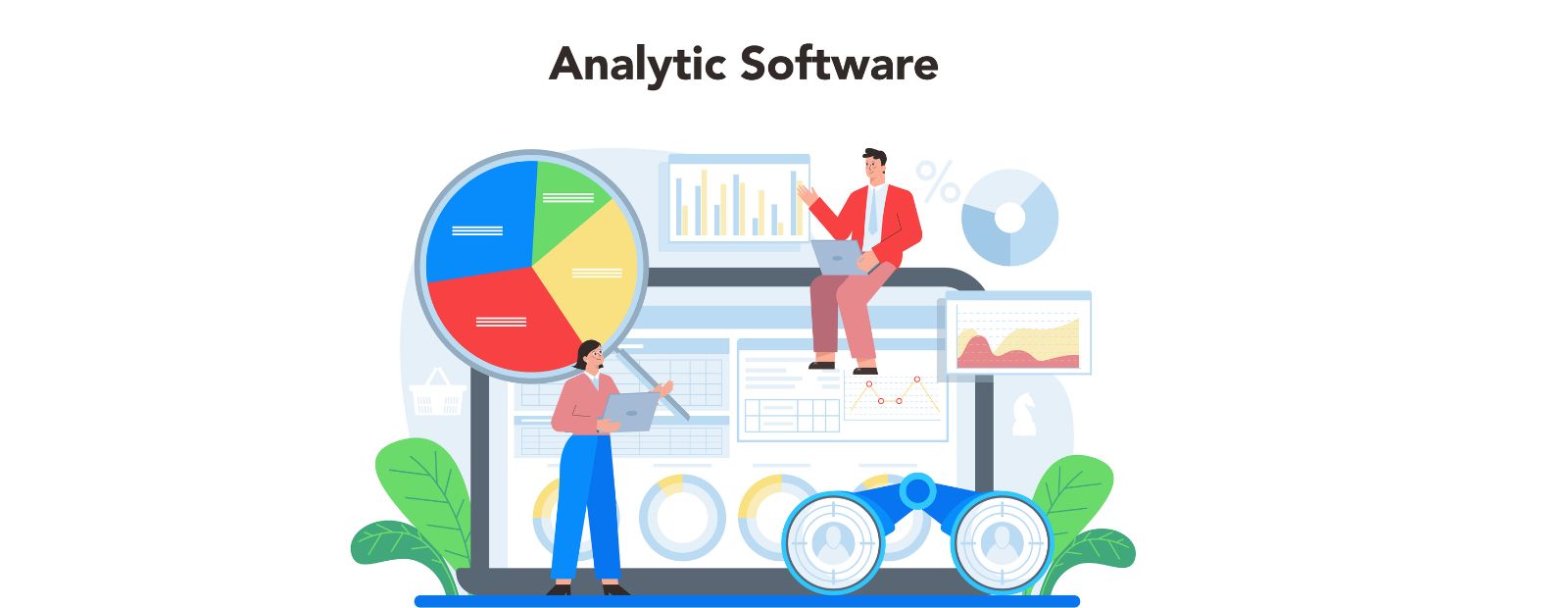Connect with us

How Cloud Innovation Is Redefining Modern IT Infrastructure
Building and maintaining IT systems feels like an endless race. Businesses face rising costs, complex setups, and constant upgrades. Many struggle to keep up with the demand for faster, smarter solutions while staying adaptable. Cloud technology is changing all of that. A recent study shows that nearly 94% of businesses already use cloud services in some form. This shift offers new ways to handle resources, enhance efficiency, and reduce costs. In this blog, we’ll examine how advancements in cloud technology are redefining IT infrastructure. Prepare to discover trends driving change and tools making a significant impact today!
Emerging Trends in Cloud Innovation
Cloud technology is reshaping how businesses operate and evolve. New advancements are driving faster decisions and smarter solutions across industries.
AI-Driven Cloud Services
AI strengthens IT infrastructure by automating routine tasks like data analysis and system monitoring. Businesses gain faster insights, reducing manual workload and improving decision-making speed. AI-powered tools predict system failures before they occur, saving costs tied to downtime. IT companies like AhelioTech are integrating these tools into cloud systems to improve infrastructure monitoring and enhance operational resilience for businesses of all sizes.
Services like virtual assistants provide continuous support around the clock without human intervention. Fraud detection algorithms in cloud computing protect sensitive information in real time. "AI doesn’t just solve problems; it predicts them," as tech leaders often say. These advancements lay the groundwork for future developments, such as Quantum Computing Integration.
Quantum Computing Integration
Quantum computing accelerates data processing speeds beyond traditional systems. Companies can solve problems in minutes that used to take days or even months. For example, financial firms analyze risk models faster, leading to smarter decisions in trading or forecasting. Supply chain management benefits greatly by refining routes and reducing costs instantly. The integration of quantum technology also increases encryption levels, strengthening data security for businesses handling sensitive information. Industries like healthcare see improvements through quicker genome sequencing analysis, providing opportunities for personalized treatment options. As this tech evolves, it works alongside cloud advancements effectively, with edge computing being the next topic worth exploring further.
Edge Computing and 5G Expansion
Businesses now process data closer to the source with edge computing. This reduces delays and speeds up decision-making. Companies apply it for real-time applications like video analytics, IoT devices, and autonomous vehicles. It supports quicker insights without excessive dependence on centralized cloud data centers.
5G networks enhance this process by providing extremely fast connections. They allow businesses to manage large volumes of data swiftly and effectively. Industries like manufacturing depend on 5 G-enabled automation for more intelligent operations. These technologies are redefining IT infrastructure into a more decentralized system focused on flexibility and adaptability.
Multi-Cloud and Hybrid Strategies
Businesses often juggle multiple cloud providers to stay flexible and avoid vendor lock-in. Hybrid models combine private and public clouds, offering a practical mix of control and scalability.
Benefits of Multi-Cloud Approaches
Multi-cloud approaches improve IT infrastructure by decreasing the risks of downtime. Distributing workloads across multiple cloud providers ensures that services remain online, even if one provider faces issues. This reduces dependency on a single vendor and avoids service interruptions that can negatively impact business operations.
This strategy increases flexibility for businesses to choose the most suitable provider for specific tasks. Organizations unsure of where to begin often consult with ACTS360 to develop tailored IT strategies that align with their infrastructure and compliance needs.
It also enhances the ability to scale, allowing smooth adjustments during peak periods without major financial strain. Additionally, spreading data over various clouds strengthens security by limiting exposure from a single breach point.
Hybrid Cloud for Enhanced Flexibility
The hybrid cloud combines private and public cloud resources to meet varying business needs. Companies can store sensitive data in private clouds while using public ones for increased flexibility during high-demand periods. This approach balances security, cost efficiency, and adaptability without overloading any single system.
It also supports improved disaster recovery by splitting workloads across multiple environments. Teams can run critical operations seamlessly even if one system fails. For businesses managing compliance requirements or shifting demands, hybrid setups provide the ideal balance of control and adaptability.
Advancements in Cloud Security
Cloud security has become a top concern for modern businesses. Companies now focus on smarter tools to guard their data.
Zero Trust Architecture
Zero Trust Architecture transitions the focus from inherently trusting users within a network to verifying every access request. It requires rigorous identity verification for all devices, users, and applications attempting to connect. This method reduces risks by considering no user or endpoint secure until confirmed otherwise. Businesses can mitigate vulnerabilities through persistent monitoring and immediate threat detection. Rather than depending on outdated perimeter defenses, this model protects the IT infrastructure internally. It accommodates hybrid cloud environments where boundaries are less defined, providing adaptability without compromising security.
Improved Threat Intelligence
Threat intelligence in cloud computing now identifies risks faster and with greater precision. Sophisticated tools analyze patterns, detect irregularities, and alert on potential breaches before they happen. Businesses can prevent attacks by understanding common tactics used by cybercriminals. Real-time monitoring enhances IT infrastructure, keeping critical data safe from ongoing threats. Machine learning provides an additional layer of defense to systems. It anticipates vulnerabilities based on historical incidents across industries. Automated alerts address suspicious activity immediately, significantly reducing response time. This forward-thinking method safeguards sensitive business operations and strengthens trust in cloud security measures without overloading internal teams.
Sustainability in Cloud Computing
Cloud computing is reshaping how businesses save energy. Companies are now adopting smarter data practices to cut waste and lower their carbon footprints.
Energy-Efficient Data Centers
Data centers now consume around 1% of global electricity. Companies are adopting energy-efficient designs to cut costs and reduce environmental impact. Enhanced cooling systems, like liquid cooling, save power by maintaining ideal server temperatures. Renewable energy sources, such as solar or wind, reduce the reliance on traditional electricity. Automation tools improve resource allocation within these facilities. Virtualization technologies combine workloads onto fewer machines for lower energy usage. These advancements support sustainability goals while managing growing IT demands effectively.
Next: Green Cloud Solutions
Green Cloud Solutions
Green cloud solutions focus on reducing energy consumption in IT infrastructure. Businesses can cut costs by using energy-efficient data centers powered by renewable resources. These systems minimize waste and improve power usage, making operations more sustainable. Cloud providers like AWS and Microsoft incorporate carbon-neutral strategies into their services. Shifting to these platforms helps reduce environmental impact while enhancing business efficiency. Companies adopting such practices appeal to eco-conscious customers, fostering trust and loyalty over time.
Serverless Computing and Efficiency
Serverless computing simplifies how businesses handle IT tasks. It trims the fat, letting teams focus on growth and innovation.
Reducing Operational Complexity
Cloud computing makes IT infrastructure easier to manage. Business owners no longer need to manage physical servers or complex hardware systems. Automation, powered by cloud technology, reduces manual tasks like software updates and routine maintenance. This allows teams to focus more on business operations instead of resolving IT issues. Easily adjusting resources becomes possible with serverless architecture. Businesses can modify resources based on demand without major system changes. Tasks like load balancing occur automatically, maintaining steady performance during traffic increases. With fewer components to oversee, companies experience more efficient workflows and lower risks of downtime.
Cost-Effective Scalability
Simplifying operations often leads to financial gains. Businesses save money with cloud computing by adjusting resources as needed. No need to invest in expensive hardware upfront or pay for unused capacity during slower periods. Pay-as-you-go pricing models ensure businesses only spend on what they use. This adaptability lets small companies grow without breaking the bank and allows large firms to manage fluctuating workloads efficiently.
Industry-Specific Transformations Enabled by Cloud
Cloud technology reshapes industries by creating smarter ways to handle complex tasks. It drives faster decisions and adapts to unique operational demands across sectors.
Healthcare and Telemedicine
Healthcare providers now depend heavily on cloud computing to deliver telemedicine services. Doctors can connect with patients online, reducing the need for physical visits. This approach improves access to care, especially in rural or underserved areas. Real-time patient data sharing allows faster diagnoses and personalized treatments. Cloud technology also stores Electronic Health Records (EHRs) securely while allowing authorized personnel immediate access.
Telemedicine benefits from a flexible IT infrastructure for video consultations and remote monitoring tools. Hospitals save costs by improving operations through virtual solutions. Advanced cloud security safeguards sensitive health information against breaches or unauthorized access, building trust among users. These advancements continue to reshape global healthcare systems, improving efficiency and accessibility without adding complexity.
Finance and Real-Time Analytics
Real-time analytics reshapes finance by increasing speed and accuracy in decision-making. Businesses use it to monitor market trends, analyze risks, and predict outcomes faster than ever. Cloud computing drives this process by handling large datasets instantly without any difficulty. Financial institutions rely on decentralized infrastructure for greater flexibility and enhanced data control. It helps them improve customer experiences while reducing operational costs.
Automation also plays a significant role. Tools now track transactions, detect fraud in seconds, and forecast financial performance with greater precision. This minimizes manual errors and strengthens trust among clients. As flexibility grows through cloud architecture, even small firms can access the same advanced tools as larger competitors. These changes make efficiency the standard rather than the exception in today’s global IT infrastructure for finance.
Cloud-Based Collaboration Tools
Cloud tools are changing how teams connect and share ideas. They make workflows simpler, making remote teamwork feel as natural as being in the same room.
Enhancing Workplace Productivity
Cloud-based collaboration tools make team communication easier. Employees access files, share updates, and work on projects in real time from anywhere. These tools eliminate location barriers, helping businesses adapt to remote or hybrid models effortlessly. Automation features in cloud technology minimize manual tasks. Scheduling meetings or tracking project timelines becomes straightforward. Businesses save time, enhance workflows, and devote energy to core operations instead of administrative tasks.
Enabling Remote Workforces
Cloud computing allows employees to work from anywhere with an internet connection. Teams access files, tools, and applications in real time through centralized systems. This removes the need for local servers or complex IT setups. Businesses save costs while ensuring improved collaboration across time zones. Video conferencing, document sharing, and project management work effectively on cloud platforms. These solutions simplify communication and improve workflows for remote staff. Companies can quickly adjust resources to meet workforce demands without additional infrastructure investment.
Conclusion
Cloud innovation reshapes IT like never before. It enhances adaptability, reduces costs, and creates opportunities for smarter operations. Businesses now adjust more quickly with flexible tools and secure systems. The result? A tech-driven future that's ready for growth.








